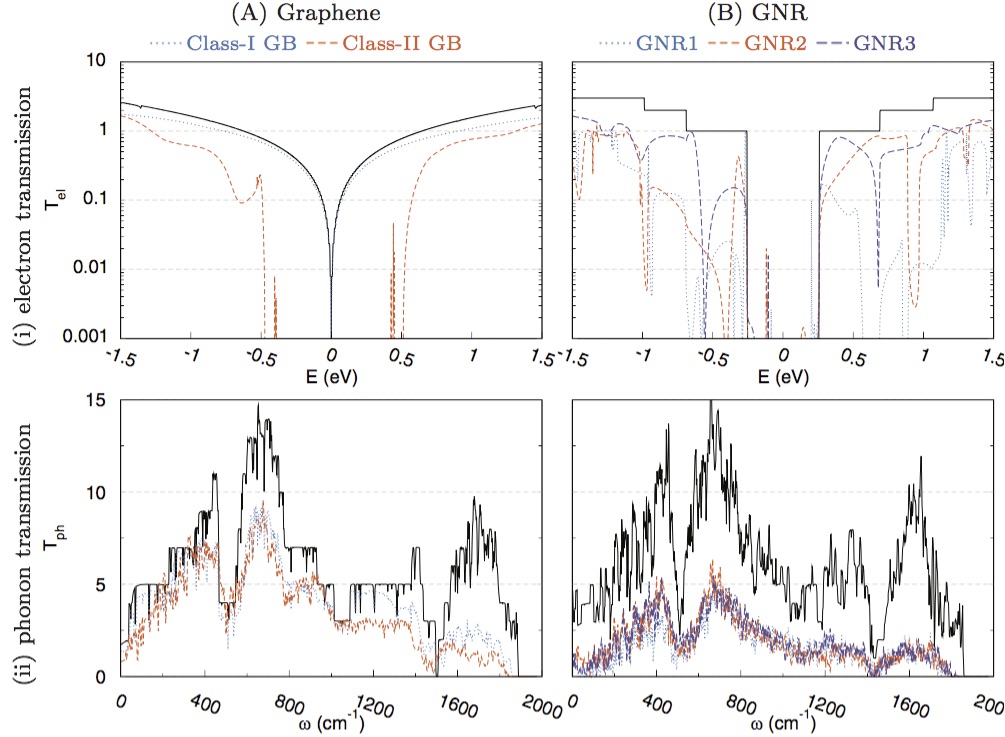We present a general atomistic ab initio-based modeling approach and numerical implementation for the calculation of thermoelectric properties of carbon nanomaterials. The approach is based on density functional theory calculations of electronic and vibrational properties in combination with quantum transport theory in the Green function formalism. It allows to calculate charge and heat transport, and therefore electrical conductance, thermopower (Seebeck coefficient), electron thermal conductance, phonon thermal conductance, and thermoelectric efficiency, i.e., figure of merit. We systematically investigated temperature, doping, and disorder dependence of the thermoelectric properties of the fundamental types of nanocarbons, such as graphene, metallic and semiconducting nanoribbons, as well as metallic and semiconducting nanotubes.

We present a general atomistic ab initio-based modeling approach and numerical implementation for the calculation of thermoelectric properties of carbon nanomaterials. The approach is based on density functional theory calculations of electronic and vibrational properties in combination with quantum transport theory in the Green function formalism. It allows to calculate charge and heat transport, and therefore electrical conductance, thermopower (Seebeck coefficient), electron thermal conductance, phonon thermal conductance, and thermoelectric efficiency, i.e., figure of merit. We systematically investigated temperature, doping, and disorder dependence of the thermoelectric properties of the fundamental types of nanocarbons, such as graphene, metallic and semiconducting nanoribbons, as well as metallic and semiconducting nanotubes.
